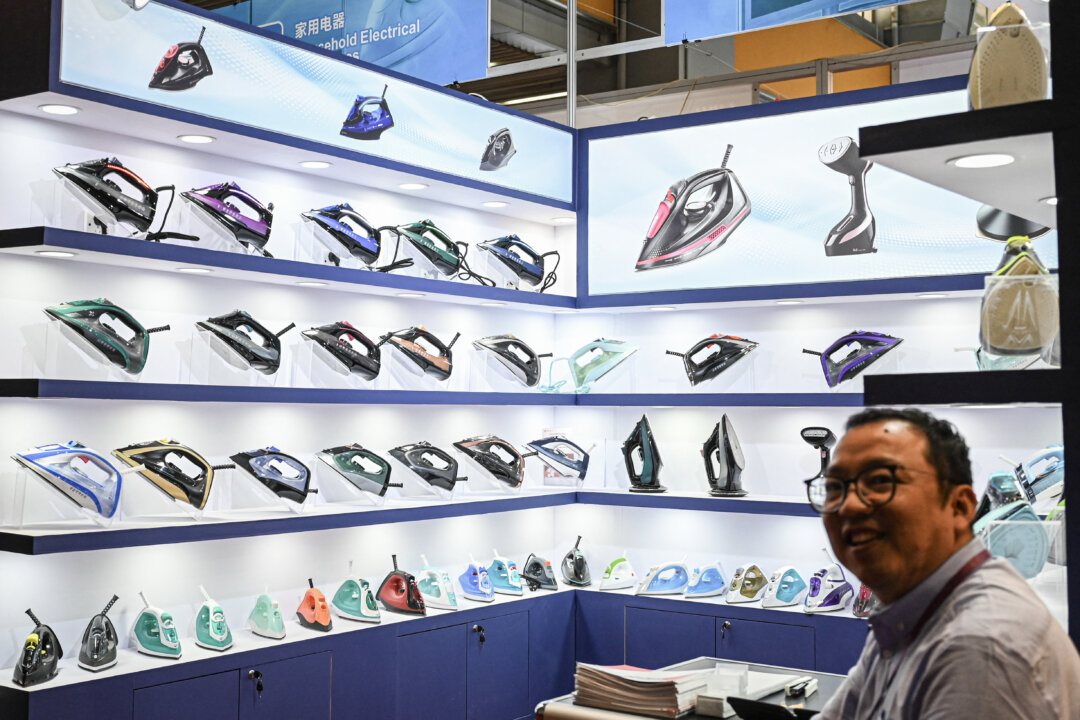Low foot traffic and early pack-ups at Chinese trade fair reveal how new US tariffs are putting pressure on Chinese exporters and factory jobs.
Guards roamed the exhibition halls of Guangzhou’s Canton Fair last week, warning booth owners not to pack up early. Many did anyway. By the fourth day, entire aisles were half-dark, a jarring sight at an event long hailed as the country’s biggest shop window to the world.
The fair is China’s twice-yearly premier showcase for foreign trade. When its aisles thin out, so does confidence in the nation’s export engine. This spring’s limp turnout—and the organizer’s order forbidding exhibitors to leave before the official teardown—highlights how U.S.-led tariffs and shifting global sourcing have begun to choke Chinese factories.
The first phase of the fair, held April 15–19 and focused on electronics, appliances, machinery, lighting, and hardware, opened with upbeat claims from officials: More than 200,000 overseas buyers from 215 countries had pre-registered, including big-name Western retailers such as Walmart, Target, Carrefour and Adeo.
Foot traffic at the fair told a different story.
“The flow is nowhere near last fall,” an exhibitor said in a video obtained by The Epoch Times. Another noted “almost no Europeans or Americans, mostly buyers from Asia, Africa, and Latin America.” By the third day, many booths had seen their last visitors.
One lighting vendor told The Epoch Times he landed no orders at the fair and could only hope that a few curious buyers might visit his factory later.
Industry veteran Karen Huang, who once sold enough sample gadgets at the fair to earn 300,000 yuan (about $41,000) in five days, told The Epoch Times that the contrast was stark.
“From morning until night, we never stopped,” she recalled of past shows. “This year, friends say the hall is empty after lunch.”
On opening day, fair officials issued a public notice, warning delegations not to tear down booths or leave posts before 6 p.m. on the closing day (April 19), citing a “severe and complex” trade environment. Infractions would result in groups losing their annual commendations and lead to them being named publicly.
The rule was quickly bent. By the fourth day, on April 18, exhibitors received an off-the-record text, verified by The Epoch Times, stating that they could begin packing up at noon on the closing day if the halls remained quiet.
“That never used to happen,” Huang said. “They know American buyers aren’t coming.”
The empty aisles trace directly to the latest round of U.S.–China tariffs. Early this month. Washington raised average duties on Chinese imports to 145 percent and closed a tax loophole on small parcels from mainland China and Hong Kong. Beijing retaliated with levies of 125 percent on U.S. imports.
Orders vanished overnight, said Mr. Wu, whose relatives in Jiangxi do piecework for exporters. “Since mid-March, there’s been no work,” he told The Epoch Times.
Many factories, according to Huang, rely on the United States for 70 percent or more of sales. Layoffs have begun—30 percent first, then 50 percent—as owners hope for a political reprieve that looks unlikely.
U.S. data show imports from China reached $438.9 billion in 2024, led by electronics and machinery, the main items at this trade fair.
Buyers have diversified since the pandemic, turning to Vietnam, Thailand, and elsewhere. “American firms learned to hedge,” Huang said. “China isn’t the only game in town anymore.”
In boom years, companies fought, and paid, for space: A secondhand booth could cost 300,000 yuan (about $41,000), a prime nine-square-meter pitch at least 200,000 yuan (about $27,000), and big brands often booked four stalls together, spending another 200,000 yuan on custom decor. Gifts and cash “relationship fees” for organizers were routine, Huang said.
Now, many firms simply stay home. During the pandemic, the fair went online and was free; recent sessions have offered discounts or waived fees for poorer regions, she added.
“Every yuan counts,” Huang said. “Flying overseas to chase clients makes no sense if they’re sitting on the fence.”
China’s Ministry of Commerce has urged retailers and e-commerce giants to buy unsold export stock for the domestic market. JD.com alone pledged at least 200 billion yuan in purchases over the next year.
Huang is skeptical. “The home market was already saturated. Adding export inventories just deepens the job crunch.”
With U.S. demand cooling and Western buyers rare on the show floor, exhibitors wonder whether the Canton Fair’s golden era has passed. The organizer’s plea—please don’t leave early—may be the clearest sign yet of how hard that era is to revive.

